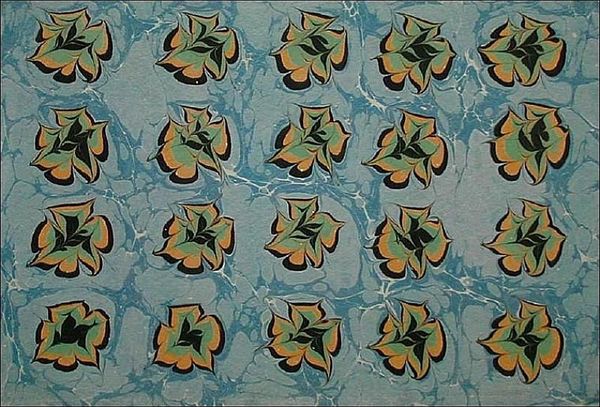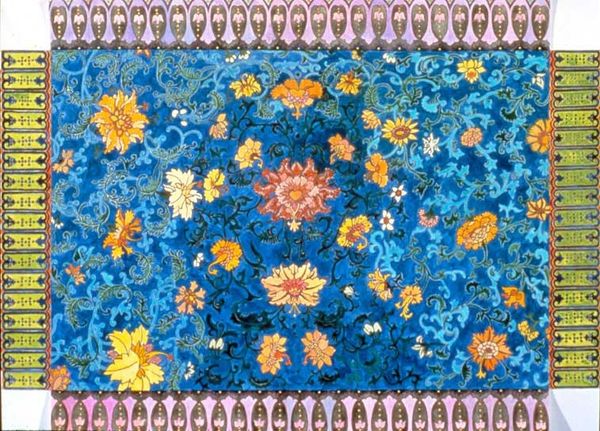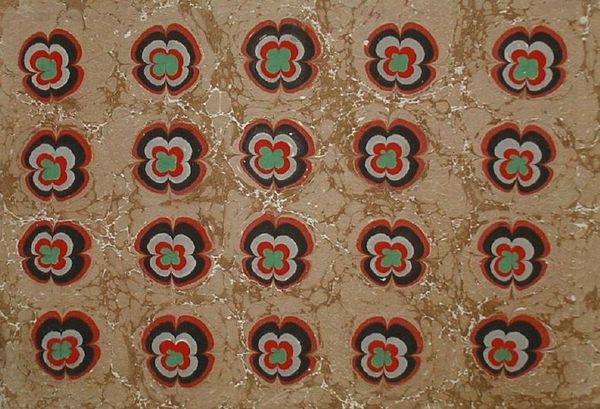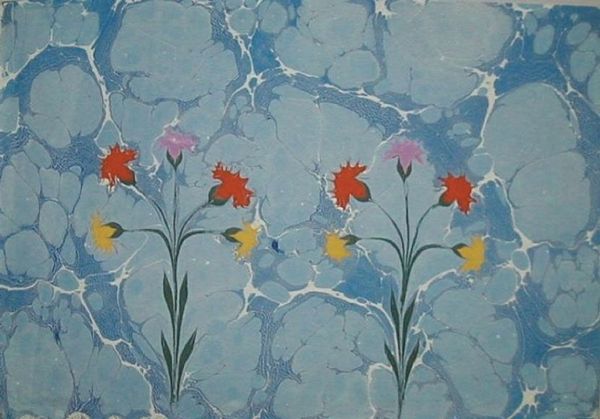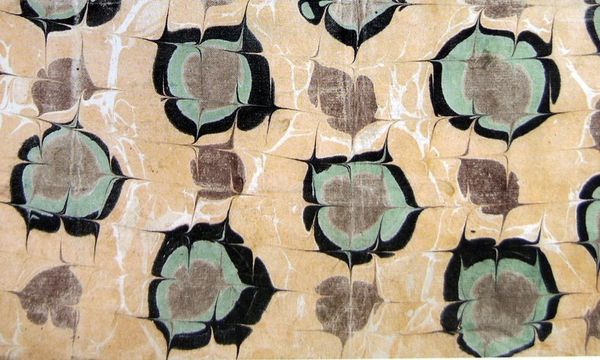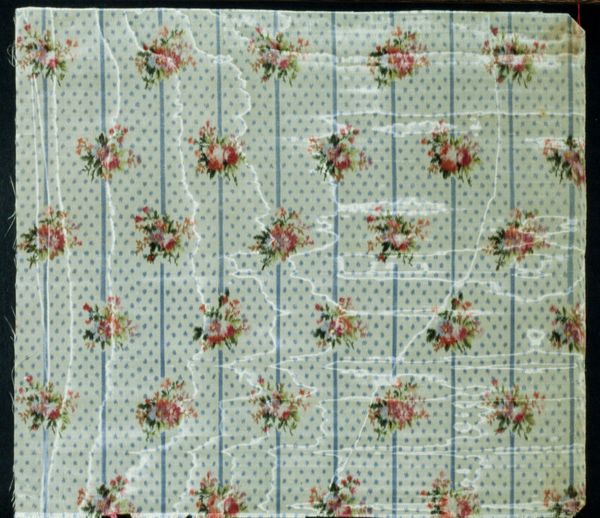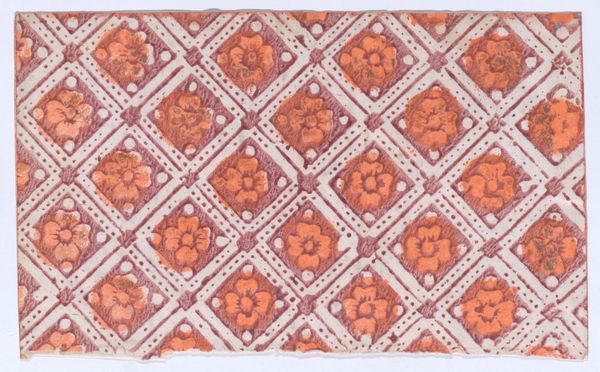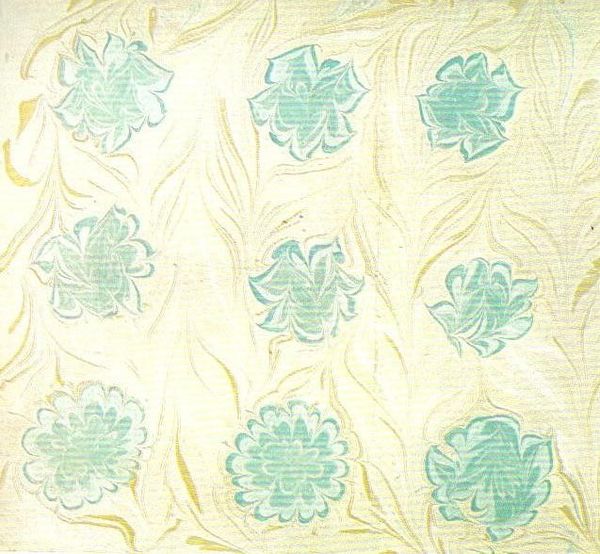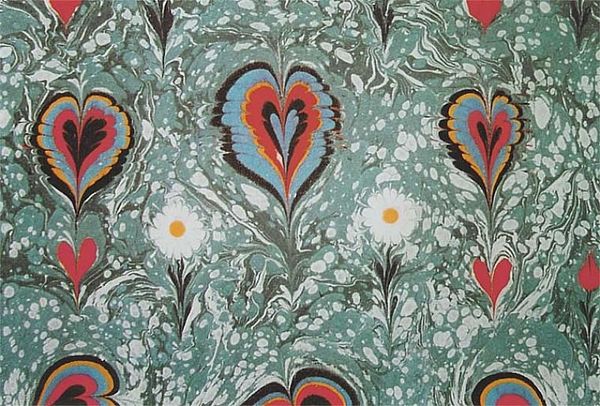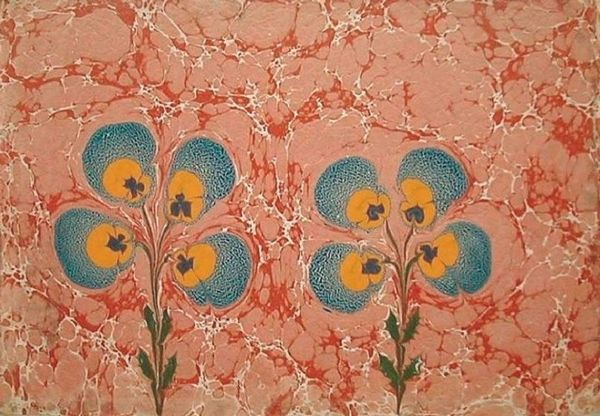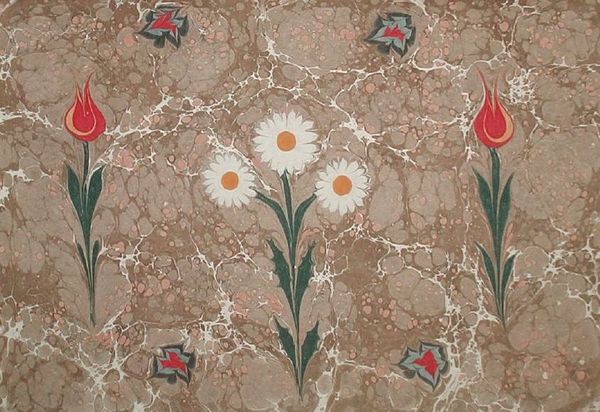
mixed-media, painting, textile, paper
#
mixed-media
#
organic
#
painting
#
pattern
#
textile
#
paper
#
orientalism
Copyright: Mustafa Duzgunman,Fair Use
Curator: At first glance, the "Hatip Ebru" pattern has a certain soothing quality to it, like gazing into a pond filled with vibrant lilies. Editor: Ah, yes, a captivating design indeed. "Hatip Ebru" presents us with the traditional Turkish art of marbling, a process where pigments float on the surface of water and are then carefully transferred to paper or textile. The overall pattern suggests an engagement with Orientalist sensibilities. Curator: I'm immediately drawn to the marbled texture and organic quality of the piece. Tell me more about the techniques and materials used. Editor: Absolutely! The process is meticulous. Duzgunman, whose "Hatip Ebru" is currently presented without a known date, uses mixed media on what appears to be paper, employing a sophisticated method to create these swirling effects, it often involves ox gall. Think of the artist orchestrating a dance of materials. Ebru isn’t just art; it’s the product of very specialized artisan skills and material knowledge being shared between masters. Curator: The regularity of the floral shapes interests me. There is a definite, although restrained repetition that has some ties to textile production. Are there any significant socio-historical aspects we should know? How does the reception and commodification shape its existence today? Editor: Traditionally, Ebru had a significant role in Ottoman society, gracing official documents and books. It signaled luxury and craftsmanship, thus, impacting production and reception across different segments of society. It also existed on the peripheries. These floral forms, carefully balanced, found appreciation across a range of viewers who understood them on multiple registers. Curator: It feels somehow… timeless. Perhaps that's due to the emphasis on the artist's skill and craft. I also admire how “Hatip Ebru” transforms simple elements like water and pigment into an evocative design, a technique employed across cultures. Editor: Yes, the fluid artistry and its rich cultural trajectory make it quite mesmerizing to view. A unique collision between material know-how and aesthetic intentions. Curator: Well, it’s been illuminating exploring both its materiality and cultural history with you.
Comments
No comments
Be the first to comment and join the conversation on the ultimate creative platform.
